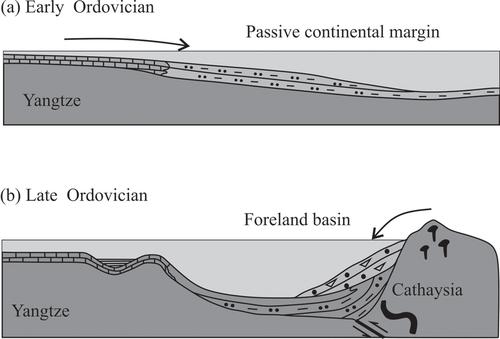当前位置:
X-MOL 学术
›
Acta Geol. Sinica Engl. Ed.
›
论文详情
Our official English website, www.x-mol.net, welcomes your feedback! (Note: you will need to create a separate account there.)
Ordovician Proto–basin in South China and its Tectonic Implications: Evidence from the Detrital Zircon U–Pb Ages of the Ordovician in Central Hunan, China
Acta Geologica Sinica-English Edition ( IF 3.3 ) Pub Date : 2020-10-08 , DOI: 10.1111/1755-6724.14583 Ji–biao ZHANG 1 , jing–bo NI 2 , Yan–xue LIU 1 , Heng ZHANG 1 , Ling BU 3
Acta Geologica Sinica-English Edition ( IF 3.3 ) Pub Date : 2020-10-08 , DOI: 10.1111/1755-6724.14583 Ji–biao ZHANG 1 , jing–bo NI 2 , Yan–xue LIU 1 , Heng ZHANG 1 , Ling BU 3
Affiliation

|
Caledonian orogeny is another important tectonic event in South China Block after the breakup of the Rodinia supercontinent. With a view to constrain the tectonic evolution and proto–basin in South China, this paper reports the geochemical and zircon U‐Pb dating data of the Ordovician strata in central Hunan, South China. Geochemical features and paleocurrent directions suggest that the lower Ordovician deposited in a passive continental margin basin with a provenance of quartzose components and showing an affinity with the Yangtze Block. U‐Pb age data for 260 detrital zircons from upper Ordovician identify three major age populations as: 900–1200 Ma, 1400–1800 Ma and 2400–2700 Ma. The detrital zircon age spectrum as well as the paleocurrent directions suggest that upper Ordovician deposited in a foreland basin and showing a close affinity with the Cathaysia Block. It is also suggest that the lower Ordovician continuously accepted the mineral from the Yangtze Block, whereas the provenance of the upper Ordovician sedimentary basin changed from the Yangtze Block to the Cathaysia Block. This change implies a tectonic movement, which caused the transformation of the proto–basin in the Hunan area in SCB from passive continental margin basin to foreland basin probably took place during late Ordovician. This fact also demonstrate that the Caledonian orogeny in South China Block began no later than 453 Ma, and a new crustal evolution model is proposed.
更新日期:2020-10-08



























 京公网安备 11010802027423号
京公网安备 11010802027423号